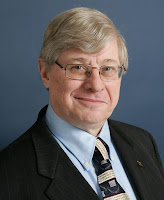When Teresa, a widow with four young children, saw a notice that members of her church would gather to deliver presents and food to a needy family, she took $10 out of her savings jar and bought the ingredients to make three dozen cookies. She got to the church parking lot just in time to join a convoy going to the home that was to receive the congregation’s help.
The route was familiar, and she was stunned when the cars pulled up in front of her house. When the pastor saw her, he said, “We never expected you to join us, Teresa. We know it’s been a great struggle since your husband died, and we all wanted to support you.”
Although she was uncomfortable being thought of as the object of charity, Teresa didn’t want to embarrass anyone so she cheerfully said, “Well, at least I can share these cookies with our friends.”
This parable teaches us that no one is too poor to help others and that true charity is rooted in love and compassion. Poverty of spirit is worse than economic distress. Teresa’s story reminds us that very few of us give as much as we could and should.
My friend Larry Rosen, former president of the YMCA of Metropolitan Los Angeles, introduced me to the concept of “sacrificial giving” – giving in abundance to a point where one must sacrifice something one desires.
You can start out easy. Take whatever amount you were thinking of giving to charity, then double it. If that’s too much, increase it by 50 percent instead. The idea is to stretch yourself. It will mean a lot to those you help, but it will mean as much to your heart.
Editor's note: This article first appeared in the Capital City Free Press on September 19, 2015.
About the author: Michael Josephson is one of the nation’s most sought-after and quoted ethicists. Founder and president of Josephson Institute and its CHARACTER COUNTS! project, he has conducted programs for more than 100,000 leaders in government, business, education, sports, law enforcement, journalism, law, and the military. Josephson is also an award-winning radio commentator.
This article was published by the Josephson Institute.



No comments:
Post a Comment